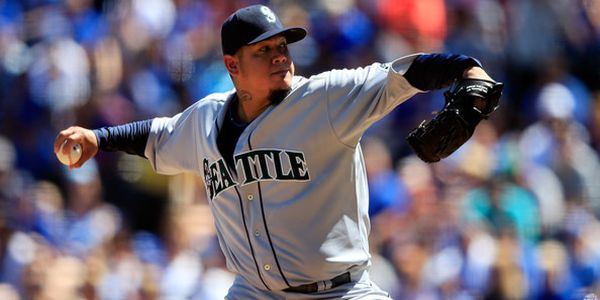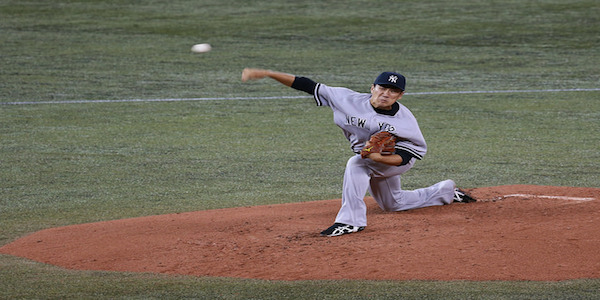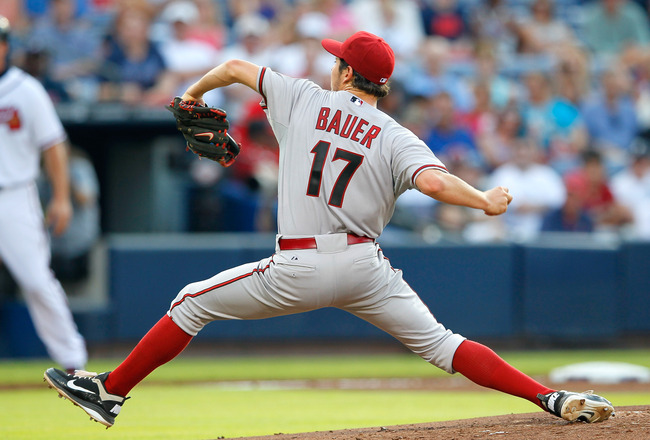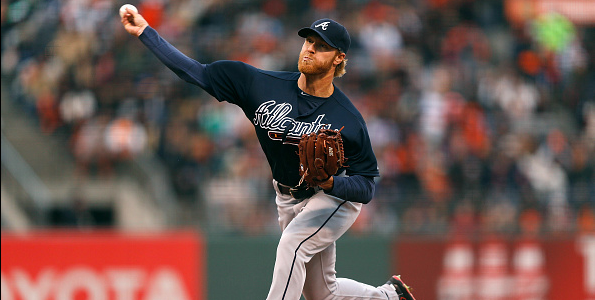2014 Fantasy Baseball: The Starting Pitcher Market — AL West

We come to the end of the American League portion of our study on starting pitchers. The AL West is easily the the best division in terms of quality and quantity of starting pitchers. In fact, if we throw in Collin McHugh we will have 18 qualifying pitchers. He stands at 59.1 innings as of this writing, but he will surpass 60 innings by the time you read this account. That’s three more starting pitchers with 60 or more innings than both the AL East and AL Central.
For those joining us late, we are looking at starting pitchers with at least 60 innings so far on the season. Pitchers will be split into three different tiers depending on their SIERA at this point. SIERA can be found at Fangraphs and represents the best predictive score for what a pitcher’s ERA should be based on a variety of factors (for more information, click on the SIERA link). When we look at SIERA we see which pitchers should be added and which pitchers should be dropped.
In addition to SIERA we will look the numbers that fit into SIERA (primarily strikeout and walk rates) and the numbers that help explain why a pitcher’s ERA and a pitcher’s SIERA might be wildly different (batting average on balls in play (BABIP) and left on base percentage (LOB%)). The first tier of starting pitchers have SIERAs under three. The second tier have SIERAs between three and four. The last tier have SIERAs above four.
|
INN |
BABIP |
LOB% |
SO/9 |
BB/9 |
ERA |
SIERA |
|
|
90.2 |
.267 |
78.8 |
7.44 |
1.79 |
2.38 |
2.66 |
|
|
106.1 |
.295 |
71.3 |
9.48 |
1.61 |
2.29 |
2.51 |
|
|
85.1 |
.303 |
85.7 |
10.65 |
2.85 |
2.11 |
2.96 |
|
|
66.0 |
.263 |
82.4 |
6.41 |
0.82 |
2.59 |
2.98 |
Which one of these names isn’t like the others? Dallas Keuchel leads the big leagues in wins above replacement (WAR) for pitchers. If you had bet on that in Vegas before the season you’d probably be a millionaire on a 100 dollar bet. The SIERA for Keuchel demonstrates he is for real. He doesn’t throw very hard, but he changes speeds well and locates his pitches. The strikeout rate demonstrates he misses enough bats.
Meanwhile, the Mariners are the only team in the American League with two tier one pitchers. I sure wouldn’t want to meet them if they were able to make the playoffs. It is downright scary that they have a couple more prime pitching prospects that could come up before the end of the season. Darvish and Hernandez were high draft picks, so their success is not surprising. Darvish has the highest strikeout rate in the league among qualified pitchers. Iwakuma would seem to be the most likely pitcher to drop out of the first tier, but his walk rate is outrageously low.
|
INN |
BABIP |
LOB% |
SO/9 |
BB/9 |
ERA |
SIERA |
|
|
92.2 |
.271 |
76.2 |
8.45 |
3.50 |
3.50 |
3.57 |
|
|
Collin McHugh |
59.1 |
.257 |
73.3 |
10.01 |
3.34 |
3.03 |
3.28 |
|
87.2 |
.278 |
74.3 |
8.93 |
3.08 |
2.87 |
3.36 |
|
|
76.2 |
.284 |
62.1 |
6.81 |
2.82 |
4.34 |
3.85 |
|
|
92.0 |
.272 |
77.0 |
7.73 |
3.13 |
2.93 |
3.56 |
|
|
88.0 |
.251 |
81.9 |
7.36 |
2.05 |
2.05 |
3.46 |
|
|
80.0 |
.297 |
76.9 |
8.33 |
2.36 |
3.04 |
3.45 |
|
|
85.0 |
.278 |
70.1 |
7.84 |
3.39 |
4.13 |
3.91 |
The Oakland Athletics model for success is similar to the Tampa Bay Rays model. Except, the Athletics model is working. You stack your rotation with average to above average starters and field the heck out of the ball. That being said, all three of the A’s starters are good bets to outperform their SIERA. Therefore, you could get a tier two pitcher that performs like a tier one pitcher.
The rest of the pitchers on the board seem to have the opposite problem. In particular, the Angels’ pitchers seem to be all over the place. A lot of that probably has something to do with an unbalanced fielding attack behind them. As we will see, some are doing very well (Jered Weaver) while others are looking for support (Tyler Skaggs).
Again, the Astros are leading the pack of unlikely heroes on the mound. McHugh doesn’t look like a dominant pitcher, but the numbers are there so far. That strikeout rate seemingly has come out of nowhere. McHugh owners might want to dangle him out there and see if they can get any blue chip players for him. You don’t have to sell low on him as the SIERA predicts he will remain solid through the season.
|
INN |
BABIP |
LOB% |
SO/9 |
BB/9 |
ERA |
SIERA |
|
|
61.0 |
.284 |
65.0 |
4.87 |
2.36 |
3.98 |
4.35 |
|
|
80.0 |
.286 |
70.5 |
6.53 |
3.83 |
4.16 |
4.16 |
|
|
66.0 |
.299 |
71.4 |
8.18 |
5.18 |
4.50 |
4.36 |
|
|
89.2 |
.254 |
77.9 |
7.13 |
2.91 |
3.51 |
4.18 |
|
|
72.2 |
.271 |
76.4 |
5.70 |
2.60 |
3.47 |
4.52 |
|
|
73.1 |
.214 |
79.9 |
4.30 |
3.93 |
3.68 |
6.00 |
If you own Chris Young you need to either find an idiot in your league or drop him like a bad habit. Mind you, you’ve gotten decent production out of him to this point, but there is no way to sustain it. He is a perfect example of how you have to pay attention to peripheral numbers on all of your pitchers.
When looking at the rest of the starters, I can’t help but think of Jim Collins (a motivational speaker/author). He coined the phrase, “good is the enemy of great.” He meant for businesses and organizations to take heed, but fantasy baseball players should as well. Many of us are holding onto tier three pitchers because they are doing okay. Heck, some of them are even good performers so far. Yet, the SIERA numbers just are stacked against them.
The Astros have a tier two pitcher down on the farm (Brett Oberholtzer) and a couple of hot prospects seemingly ready to be called up (Mike Foltyniewicz and Nicholas Tropeano) any minute. Unfortunately, they are paying Feldman a ton of money to be mediocre and Peacock and Cosart are showing too much promise to out and out replace. You’d hate to pray for an injury, but this logjam needs to be broken.
Funny, but injuries got the rest of the folks their jobs. The aforementioned Young is in the Mariners rotation because of injuries. Tom Milone was never supposed to be in the Athletics rotation this season either. That’s fine for a real team, but you shouldn’t settle for tier two guys on your fantasy team.





